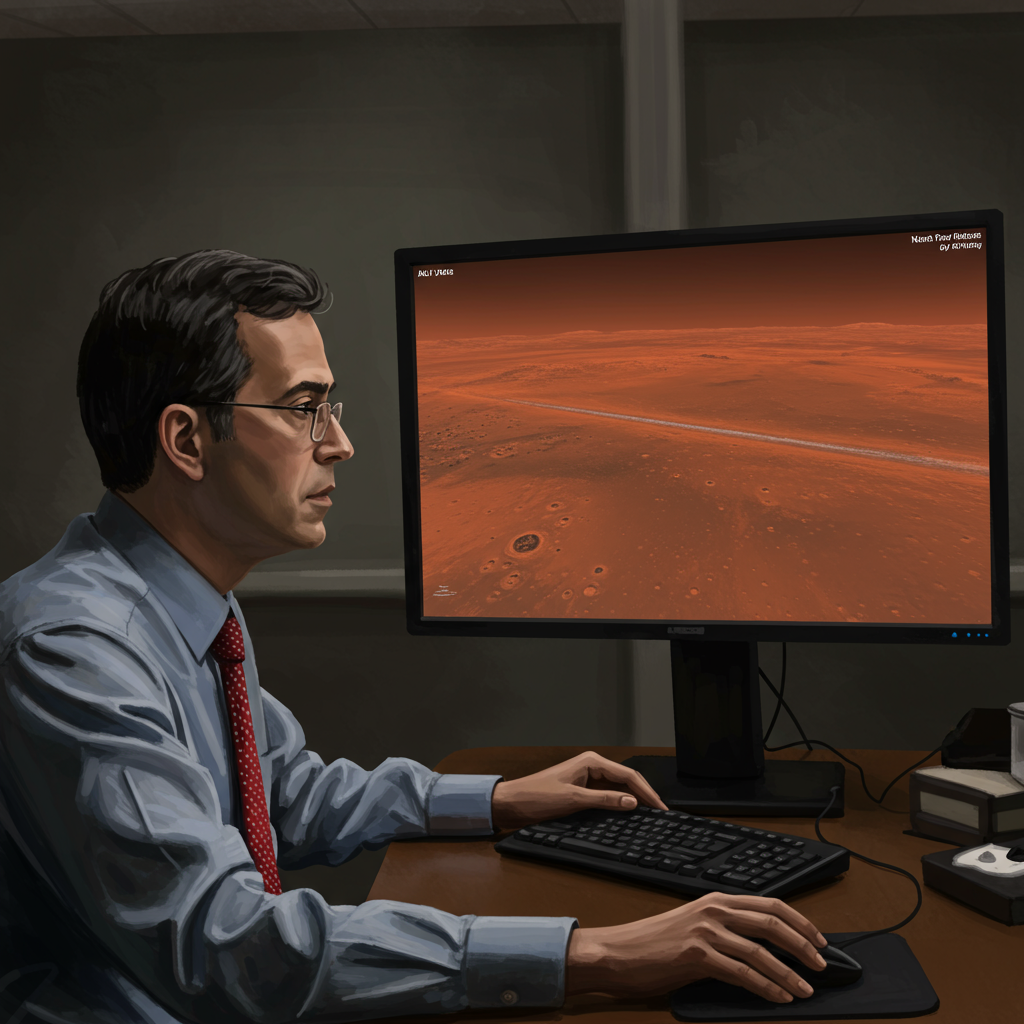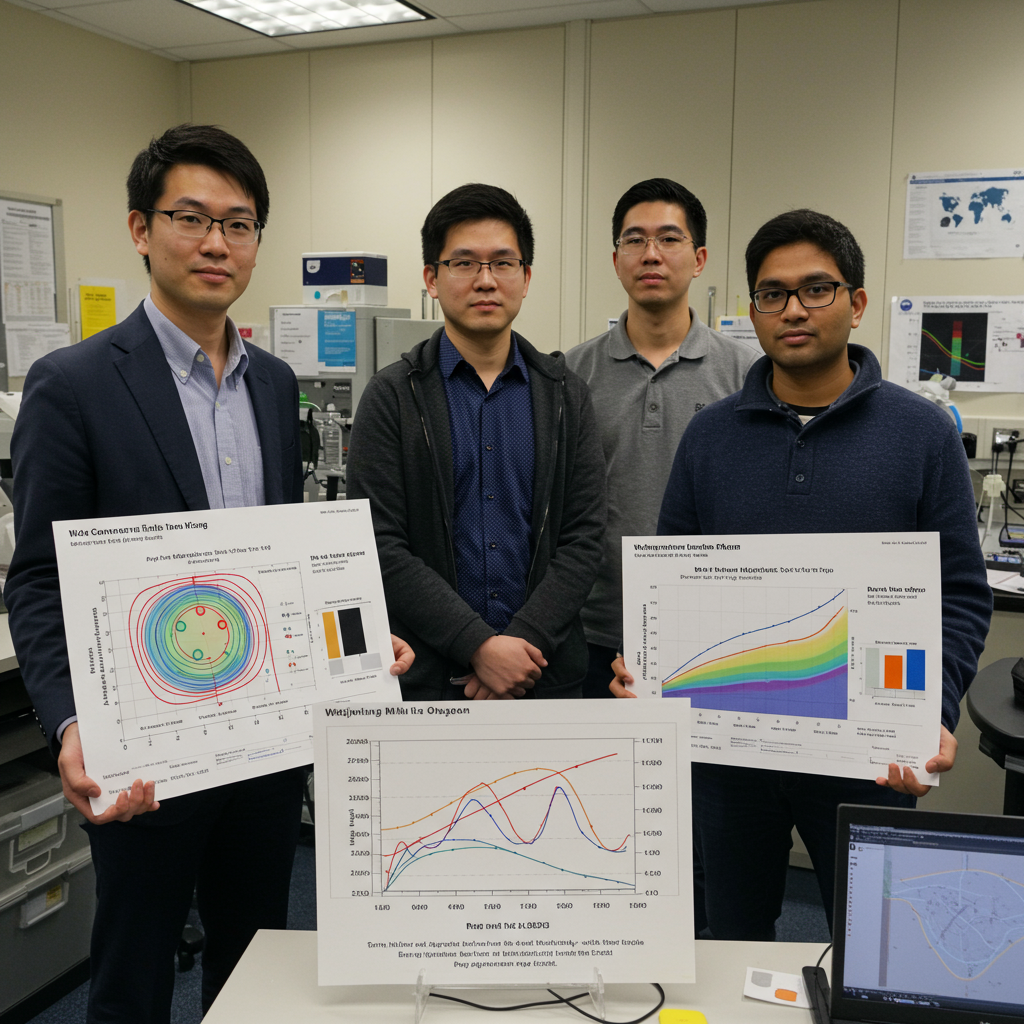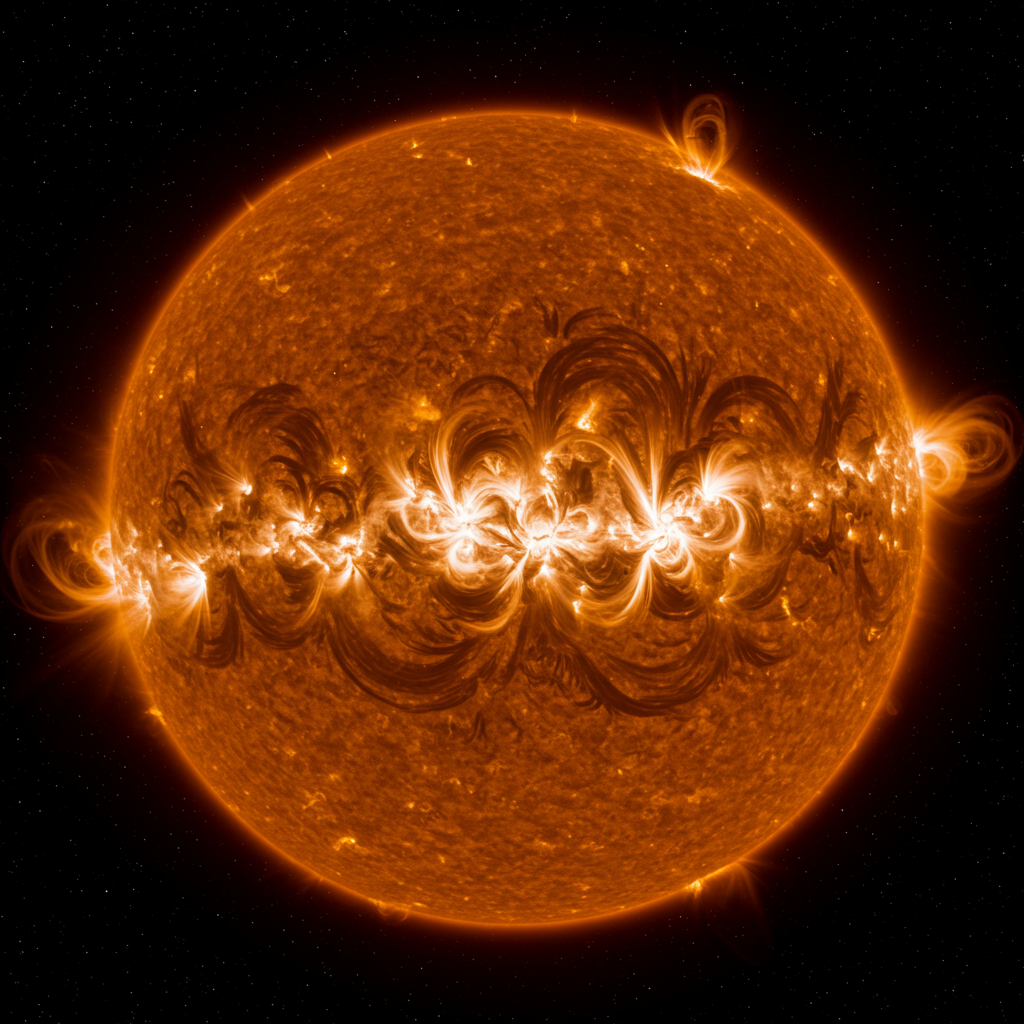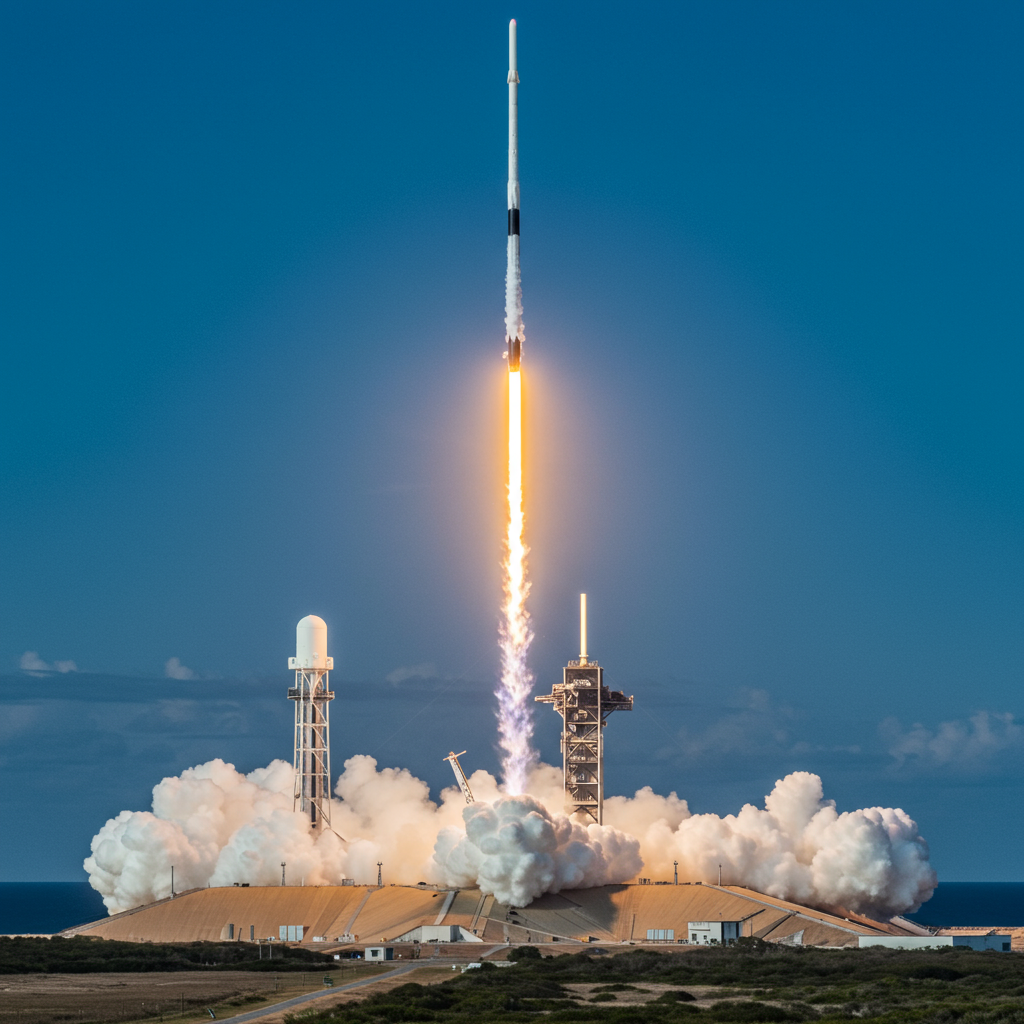When NASA’s Perseverance rover captures images from the Martian surface, the scientific community and public alike eagerly scrutinize every detail. So, when a peculiar elongated “stripe” appeared in a recent Navcam image, purportedly showing the interstellar object 3I/ATLAS, it ignited a flurry of speculation across social media. Was this an unprecedented discovery – perhaps a colossal cylindrical alien spacecraft traversing the Martian sky? Renowned Harvard astrophysicist Avi Loeb quickly weighed in, offering a compelling, data-driven explanation that demystifies the unusual photographic anomaly. This deep dive explores the fascinating science behind the image, revealing why the “stripe” is not an alien mega-structure but rather a common, though often misunderstood, imaging artifact.
The Martian Sky Mystery: An Interstellar Visitor
On October 4, 2025, the Right Navigation Camera (Navcam) aboard NASA’s Mars Perseverance rover captured an image that soon became the subject of intense online discussion. Posted by NASA, these images showed an elongated bright streak. Social media users swiftly identified it, or speculated it to be, 3I/ATLAS – an interstellar object then approximately 38 million kilometers from Mars. The unique appearance of the “stripe,” roughly four times longer than its width, immediately raised questions about the object’s true nature. Was 3I/ATLAS, as some suggested, a giant, cigar-shaped entity?
The excitement surrounding 3I/ATLAS is understandable. Interstellar objects, like the previously observed ‘Oumuamua, offer rare glimpses into material originating from beyond our solar system, potentially carrying secrets from distant star systems. Therefore, any unusual characteristic observed in such an object captures significant scientific and public attention. However, interpreting distant cosmic phenomena from raw images requires a meticulous, expert approach, precisely what Avi Loeb provided.
Decoding the Stripe: Avi Loeb’s Expert Analysis
Responding to queries, including one from Rep. Anna Paulina Luna, Professor Avi Loeb – a leading voice in astrophysics and head of the Galileo Project – immediately undertook a detailed analysis of the Navcam image. His expertise was critical in dispelling the sensational claims and offering a grounded scientific explanation. Loeb’s approach involved carefully examining the specifications of the Perseverance rover’s Navcam and cross-referencing observations with known data about 3I/ATLAS.
The Navcam, designed for navigation and hazard avoidance on Mars, operates with specific technical parameters. It’s sensitive to visible light and boasts an angular resolution of 0.33 milli-radian (or 68 arcseconds) per pixel. At the considerable distance of 3I/ATLAS from Mars (38 million kilometers) when the image was taken, this resolution translates to a spatial scale of approximately 12,500 kilometers per pixel. This scale is fundamental to understanding the perceived width of the elongated stripe in the image. Given its observed length-to-width ratio, the projected length of the stripe appeared to be a staggering 50,000 kilometers.
The Myth of a Mega-Cylinder
For many, the idea of an interstellar object stretching 50,000 kilometers was both captivating and perplexing. However, Loeb’s calculations quickly demonstrated the impossibility of such a colossal physical object. Previous observations by the SPHEREx space observatory had established an upper bound on 3I/ATLAS’s diameter at just 46 kilometers, assuming a 4% albedo (reflectivity). The Navcam stripe was a thousand times longer than this established maximum diameter. This stark discrepancy immediately signaled that the stripe could not represent the actual physical dimensions of 3I/ATLAS.
Further corroboration came from the Hubble Space Telescope. An image taken on July 21, 2025, when 3I/ATLAS was three times the Earth-Sun distance from Hubble, showed the object appearing significantly smaller – by at least an order of magnitude – than what a 50,000-kilometer cylinder would project. Had 3I/ATLAS truly been a 50,000-kilometer cylinder, it would have spanned an angular size of 23 arcseconds in the Hubble image. The actual Hubble data presented a clear contradiction to the cylindrical object hypothesis.
The True Culprit: Integration Time and Relative Motion
With the “giant cylinder” theory debunked, Loeb’s analysis shifted towards identifying the genuine cause of the elongated stripe. The most plausible explanation pointed to an imaging artifact resulting from the Navcam’s integration time combined with the significant relative motion of 3I/ATLAS across the Martian sky.
Integration time refers to the duration a camera’s sensor collects light for a single image. Longer integration times allow more light to be gathered, making faint objects brighter, but they also capture any movement of the object or the camera during that period, leading to blurring or “smearing.”
Mars itself orbits the Sun at a speed of 24 kilometers per second. Meanwhile, 3I/ATLAS travels on a retrograde orbit, moving in the opposite direction relative to Mars, at a speed of about 67 kilometers per second relative to the Sun. This complex interplay of orbital mechanics results in a substantial relative speed between 3I/ATLAS and the Perseverance rover. Loeb calculated that this relative speed would account for a path length of approximately 50,000 kilometers over an integration time of around 10 minutes.
How Images Become “Stripes”
The Navcam images were not single, instantaneous snapshots. Instead, they were likely composite images, meaning hundreds of individual frames were stacked together over a total duration of roughly 10 minutes. While a single Navcam snapshot has a maximum exposure time of 3.28 seconds, the stacking process effectively extends the total observation period.
In a single, short exposure frame, 3I/ATLAS would have appeared as a circular spot. Its motion during such a brief snapshot would have smeared its image by only about 300 kilometers. This minimal smearing is dwarfed by the inherent blurring of 12,500 kilometers caused by Navcam’s limited angular resolution. However, by stacking hundreds of these individual images taken over a cumulative 10-minute interval, the continuous movement of 3I/ATLAS across the Martian sky transformed its point-like appearance into the observed elongated stripe. This stacking technique also significantly enhanced the apparent brightness of the faint interstellar object, making it visible in the final image.
Exploring Alternative Scenarios and Future Insights
Loeb’s analysis hinges on the critical assumption that the Navcam images indeed depict 3I/ATLAS. He notes that NASA’s website did not explicitly confirm this. If the images were single, short-exposure snapshots (below 3.28 seconds), then the observed brightness and angular length would imply the source is not 3I/ATLAS. In such a scenario, the source would need to be much closer to the camera, moving at a slower speed, yet still capable of being smeared into an elongated shape.
Potential candidates for such closer objects include Mars’s moons, Phobos or Deimos. Phobos, with an angular diameter of 2.4 milli-radians in the Martian sky, would be resolvable by Navcam. To produce an elongated image of Phobos, given its movement, an exposure time of about 40 seconds would be required, necessitating multiple stacked snapshots. Similarly, Deimos, with an angular diameter of 0.5 milli-radians, would need a comparable number of stacked images over roughly 9 seconds to create a similar effect. Essentially, the “stripe” can be visualized as a sequence of smeared snapshots, akin to a string of distinct, slightly blurred beads.
The passage of 3I/ATLAS through the Martian system was a high-profile event, attracting observations from numerous assets. Over seven Mars orbiters, alongside the Perseverance rover, likely captured images of this interstellar visitor. Among these, the HiRISE camera on NASA’s Mars Reconnaissance Orbiter offers the highest resolution. On October 3, 2025, HiRISE had an angular resolution translating to 30 kilometers per pixel. Data from HiRISE, particularly its brightest pixel, promises to provide the most precise constraints yet on the actual area of 3I/ATLAS, offering definitive answers. The scientific community eagerly awaits the release of these high-resolution images.
Frequently Asked Questions
What exactly was the “stripe” seen in the Perseverance rover image of 3I/ATLAS?
The “stripe” observed in the Navcam image from NASA’s Perseverance rover was not a physical characteristic of the interstellar object 3I/ATLAS. Instead, it was an imaging artifact. This elongated appearance resulted from the combination of the camera’s long integration time (approximately 10 minutes, achieved by stacking hundreds of individual snapshots) and the significant relative motion of 3I/ATLAS across the Martian sky during that period. Essentially, the object moved considerably while the camera was collecting light, smearing its image into a streak rather than a distinct point.
How did scientists like Avi Loeb confirm the stripe wasn’t a giant object?
Avi Loeb confirmed the stripe wasn’t a giant object by comparing its perceived length to previously established data about 3I/ATLAS. Calculations based on Navcam’s resolution suggested the stripe represented an object 50,000 kilometers long. However, the SPHEREx observatory had determined 3I/ATLAS’s maximum diameter to be only 46 kilometers. Furthermore, Hubble Space Telescope images of 3I/ATLAS showed it to be significantly smaller, by an order of magnitude, than a 50,000-kilometer object would appear. This overwhelming evidence led to the conclusion that the stripe was an artifact, not an actual physical dimension.
What is the significance of studying objects like 3I/ATLAS, and why is high-resolution imaging crucial?
Studying interstellar objects like 3I/ATLAS is highly significant because they originate from beyond our solar system, offering unique insights into the composition and processes of other star systems. They are natural probes from distant cosmic environments. High-resolution imaging, such as that provided by cameras like HiRISE, is crucial for obtaining precise data on these objects. Higher resolution allows scientists to discern finer details, accurately measure size and shape, identify potential surface features, and precisely track their trajectories, moving beyond ambiguities caused by imaging artifacts to understand their true astrophysical nature.
Conclusion
The compelling “stripe” in the Perseverance rover’s image of 3I/ATLAS serves as a powerful reminder of both the excitement and the challenges inherent in space exploration and astronomical observation. While initial reactions on social media veered towards sensational interpretations, Avi Loeb’s rigorous analysis quickly provided a clear, scientifically sound explanation. The elongated appearance was not a colossal alien cylinder but a classic imaging artifact, born from the interplay of Navcam’s long integration time and the significant relative motion of the interstellar visitor. This episode underscores the importance of expert interpretation and critical thinking when faced with puzzling images from the cosmos. As we await the high-resolution images from HiRISE, the scientific pursuit of understanding interstellar objects continues, bringing us closer to unraveling the mysteries of our universe, one carefully analyzed pixel at a time.




